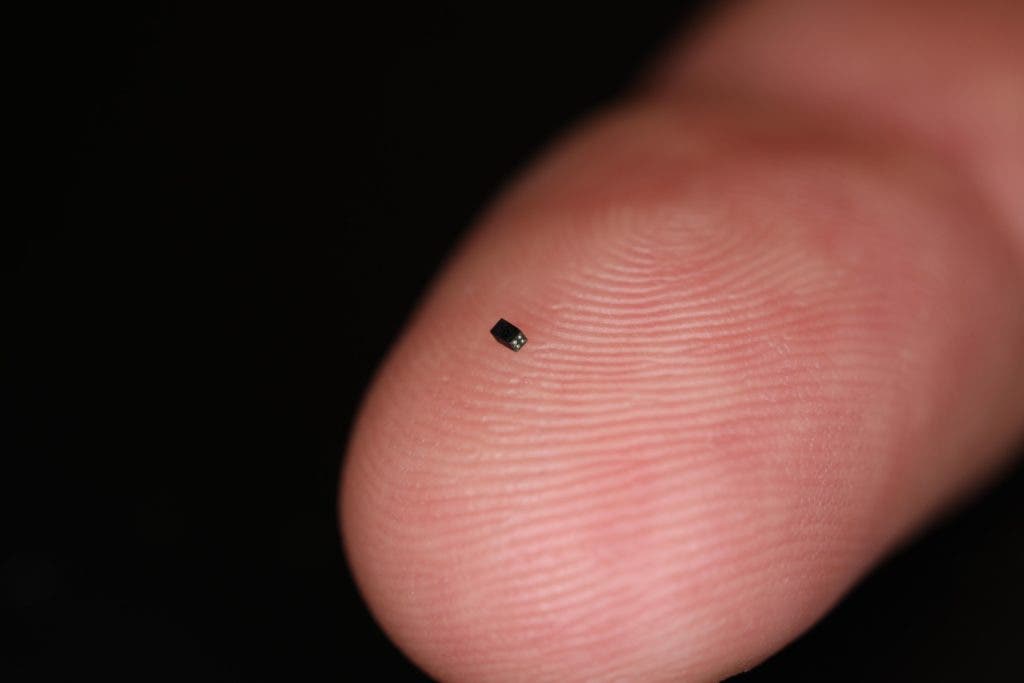A new, diminutive optical sensor has won a place in the Guinness Book of World Records for being so, so small (and still functional).

Image credits OmniVision.
OmniVision, a California-based developer of advanced digital imaging solutions has announced the development of its OV6948 image sensor — a piece of gear that now holds the record for the smallest image sensor in the world.
Eagle-eyed, but small
The sensor will be used in a camera module, which the company has christened CameraCubeChip. OmniVision’s announcement (published on their website) of the new device all but earmarks it for medical use, stating that it’s meant to “address the market demand for decreased invasiveness and deeper anatomical access”. In the future, the company hopes to also expand the range of potential users to include veterinarians, dental practitioners, and the health industry at large.
And it’s easy to see why. The new sensor measures just 0.575 x 0.575 mm (1 mm = 0.03 in), while the wafer-shaped CameraCubeChip is only slightly larger: 0.65 x 0.65 x 1.158 mm, roughly the size of a grain of sand. Because of its very small size, the sensor and camera module can be fixed to disposable endoscopes and used to imagine the smallest parts of the body, from nerves and parts of the eye to the spine, heart, the inside of joints, or the urological system. Patients are bound to appreciate how small the devices are, considering that alternatives available today are uncomfortable, and can become quite painful.
The camera will also be much cooler (in terms of temperature) than traditional probes, which means it can be used for longer inside a patient’s body without posing any risk. This is due to its very modest power usage: just 25 mW (milliwatts) of power.
The new sensor has a 120-degree field of vision, a focus range of 3 to 30 mm, allows for 200 x 200 resolution, and can process video at 30 fps (frames per second). It will also be able to transmit data in analog form over a maximum distance of 4 meters.
Another important advantage of the new sensor is that it can be affixed to disposable endoscopes. Patient cross-contamination caused by endoscope reuse is a growing public health concern, one which the camera can help fix, or at least reduce.






